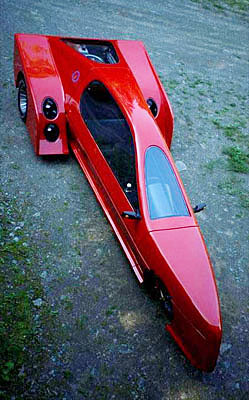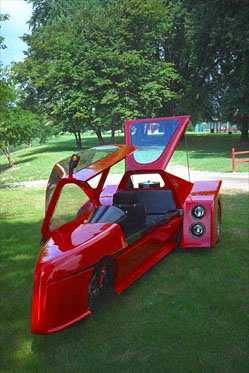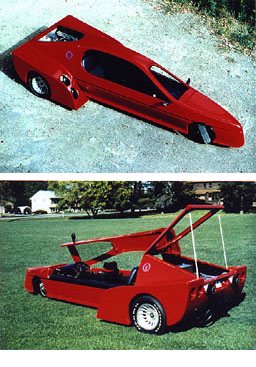Navigation
Install the app
How to install the app on iOS
Follow along with the video below to see how to install our site as a web app on your home screen.
Note: This feature may not be available in some browsers.
More options
You are using an out of date browser. It may not display this or other websites correctly.
You should upgrade or use an alternative browser.
You should upgrade or use an alternative browser.
Dream Machine
- Thread starter Zmey
- Start date
dragonhearted
Not pussy-footin' around!
- Joined
- Oct 5, 2002
- Posts
- 5,008
sanjuaneros
Literotica Guru
- Joined
- Sep 14, 2002
- Posts
- 7,300
G
Guest
Guest
My last lover drove a Lotus Espirit....I always thought he was compensating for his lack of, er, well, DICK!
Guys who drive cars like these, well, give 'em a gold chain and a bad comb-over and you've got yourself a full-fledged mid-life crisis!
Guys who drive cars like these, well, give 'em a gold chain and a bad comb-over and you've got yourself a full-fledged mid-life crisis!
sweet soft kiss
Tastefully Round
- Joined
- Feb 3, 2003
- Posts
- 16,101
Keirena said:My last lover drove a Lotus Espirit....I always thought he was compensating for his lack of, er, well, DICK!
Guys who drive cars like these, well, give 'em a gold chain and a bad comb-over and you've got yourself a full-fledged mid-life crisis!
Now thats SNORT worthy!!!

Lovepotion69
Going with the flow
- Joined
- Feb 4, 2002
- Posts
- 4,066
What if it's the woman driving one? 
HeavyStick
Anti-M 0derator
- Joined
- Jan 2, 2002
- Posts
- 47,301
Lovepotion69 said:What if it's the woman driving one?
She has a small strap-on.
bknight2602
Knight of Pleasure
- Joined
- Jul 22, 2002
- Posts
- 24,362
Lovepotion69 said:What if it's the woman driving one?
Good point.
Bob_Bytchin
Lit Class of '02
- Joined
- Apr 17, 2002
- Posts
- 41,128
I'm not compensating, this is what I drive:


HeavyStick
Anti-M 0derator
- Joined
- Jan 2, 2002
- Posts
- 47,301
Nice shade of yellow.... Nancy Boy.
Comshaw
VAGITARIAN
- Joined
- Nov 9, 2000
- Posts
- 11,666
The Vigillante 




Acceleration
The Vig prototype weighed in at 1,480 pounds
-- 70 pounds lighter than an Indy car (which
requires a minimum weight of 1,550 pounds).
With a very low pounds-per-horsepower ratio,
and 95% of the vehicle weight on the rear drive
tires during maximum acceleration, the
performance is phenomenal. Its acceleration is
like a street-legal dragster. It's quicker off the line
than a Ferrari F-40 or F-50, a MacLaren F-1
road car, or any other limited production exotic.
Cornering and Handling
With a very low center of gravity and most of
the weight over the two widely-spaced rear drive
tires (the only tires that can handle the transverse
cornering forces), and a very low polar moment
of inertia, cornering is incredible. The maximum
theoretical tip-over limit is calculated to be 3.27
lateral "g", so the Vig will slide on dry pavement
with street tires long before it reaches its tip-over
limit. Our original design, the TriVetteTM that was
designed in 1974, actually out cornered a
Corvette of that time by 10% (verified by
independent testing by an enthusiast magazine).
And, it still had a 0.5 "g" safety margin before
reaching the tip-over limit. Later testing by the
Department of Transportation showed the
TriVette to be one of the most stable and best
handling vehicles they had tested. It out cornered
and out handled virtually all four-wheeled
production vehicles. Their conclusion was that
three-wheeled vehicles can corner and handle
just as well as four-wheeled vehicles if the
physics are done correctly. Also, the very low
polar moment of inertia yields very quick
transient responses to steering inputs.
Braking
As incredible as the acceleration and cornering
capabilities are, the most astounding capability of
the Vigillante is its braking performance. The
Vigillante will stop at 1 "g" (with high
performance tires), but the most amazing thing is
how it handles under braking in slick road
conditions. Most of the weight is on the rear tires
at static loading, and under hard braking some
weight is transferred to the front tire. At 1 "g"
deceleration, approximately 33% of the vehicle
weight is on each tire, with approximately 66% of
the vehicle weight on the rear tires, behind the
center of gravity (CofG). That means the vehicle
is in the dynamically stable condition.
Lock up all three tires on wet pavement in a
corner and the Vig will not spin. Because 66% of
the braking force is being exerted behind the
CofG, it simply takes the tangent line and scuffs
off speed. It is more stable under braking than any two-wheel or four-wheel design. This is one of the primary reasons that all jet fighters are three-wheel designs (tricycle gear). It is the most stable design under extreme braking. If there were a better design available, aeronautical engineers would be using it. Automotive engineers treat three-wheel designs like the plague, but aeronautical engineers use tricycle gear designs almost exclusively.
http://www.vigillante.com/
Comshaw




Acceleration
The Vig prototype weighed in at 1,480 pounds
-- 70 pounds lighter than an Indy car (which
requires a minimum weight of 1,550 pounds).
With a very low pounds-per-horsepower ratio,
and 95% of the vehicle weight on the rear drive
tires during maximum acceleration, the
performance is phenomenal. Its acceleration is
like a street-legal dragster. It's quicker off the line
than a Ferrari F-40 or F-50, a MacLaren F-1
road car, or any other limited production exotic.
Cornering and Handling
With a very low center of gravity and most of
the weight over the two widely-spaced rear drive
tires (the only tires that can handle the transverse
cornering forces), and a very low polar moment
of inertia, cornering is incredible. The maximum
theoretical tip-over limit is calculated to be 3.27
lateral "g", so the Vig will slide on dry pavement
with street tires long before it reaches its tip-over
limit. Our original design, the TriVetteTM that was
designed in 1974, actually out cornered a
Corvette of that time by 10% (verified by
independent testing by an enthusiast magazine).
And, it still had a 0.5 "g" safety margin before
reaching the tip-over limit. Later testing by the
Department of Transportation showed the
TriVette to be one of the most stable and best
handling vehicles they had tested. It out cornered
and out handled virtually all four-wheeled
production vehicles. Their conclusion was that
three-wheeled vehicles can corner and handle
just as well as four-wheeled vehicles if the
physics are done correctly. Also, the very low
polar moment of inertia yields very quick
transient responses to steering inputs.
Braking
As incredible as the acceleration and cornering
capabilities are, the most astounding capability of
the Vigillante is its braking performance. The
Vigillante will stop at 1 "g" (with high
performance tires), but the most amazing thing is
how it handles under braking in slick road
conditions. Most of the weight is on the rear tires
at static loading, and under hard braking some
weight is transferred to the front tire. At 1 "g"
deceleration, approximately 33% of the vehicle
weight is on each tire, with approximately 66% of
the vehicle weight on the rear tires, behind the
center of gravity (CofG). That means the vehicle
is in the dynamically stable condition.
Lock up all three tires on wet pavement in a
corner and the Vig will not spin. Because 66% of
the braking force is being exerted behind the
CofG, it simply takes the tangent line and scuffs
off speed. It is more stable under braking than any two-wheel or four-wheel design. This is one of the primary reasons that all jet fighters are three-wheel designs (tricycle gear). It is the most stable design under extreme braking. If there were a better design available, aeronautical engineers would be using it. Automotive engineers treat three-wheel designs like the plague, but aeronautical engineers use tricycle gear designs almost exclusively.
http://www.vigillante.com/
Comshaw
Similar threads
- Replies
- 2
- Views
- 161
Share:





